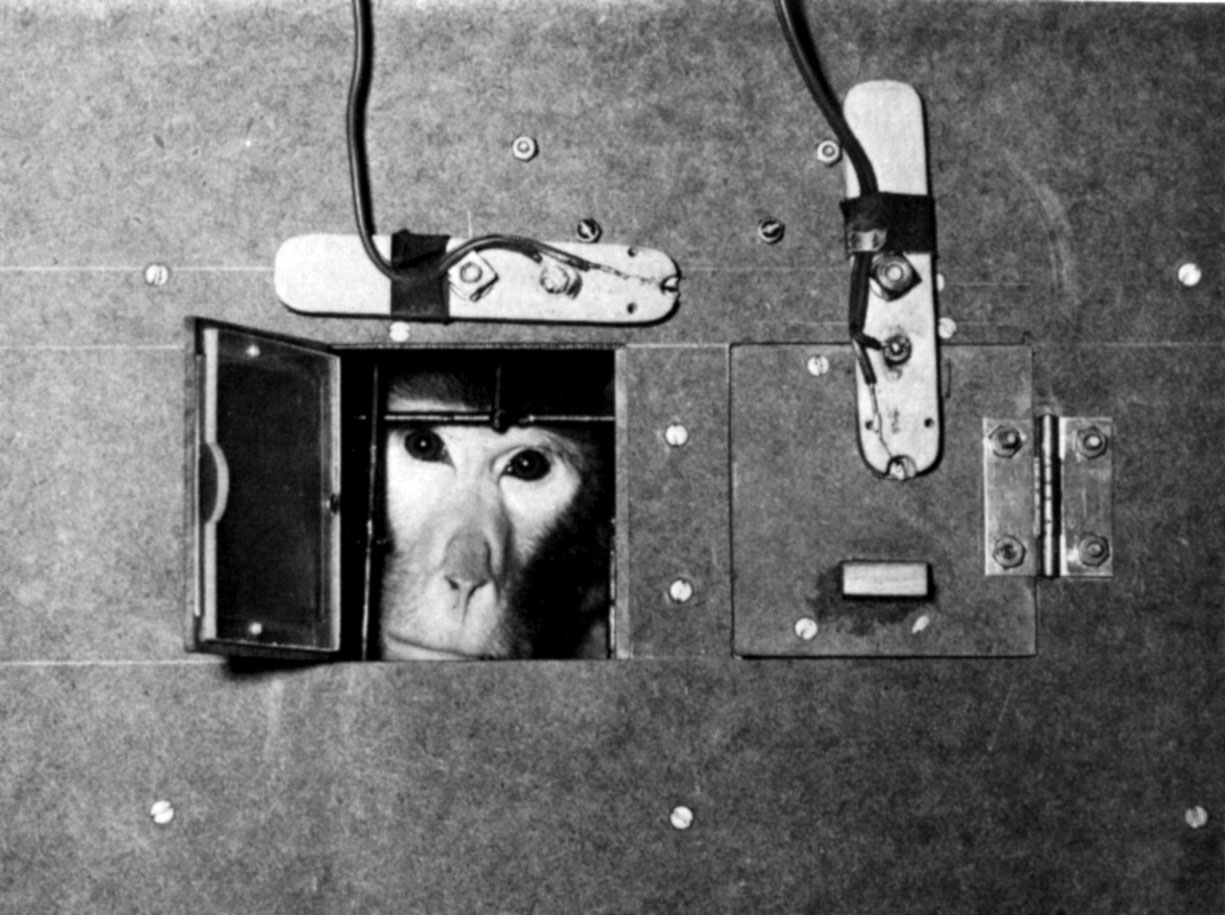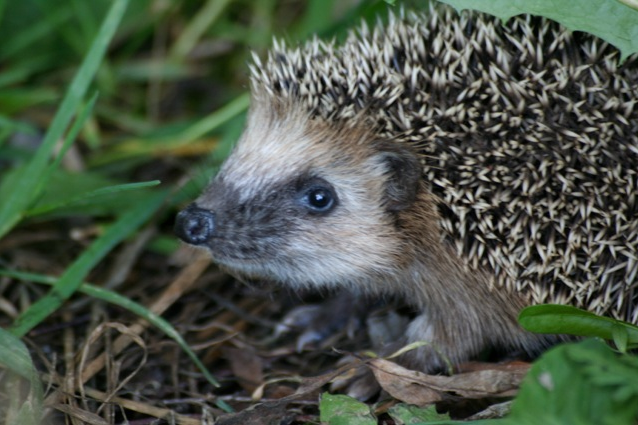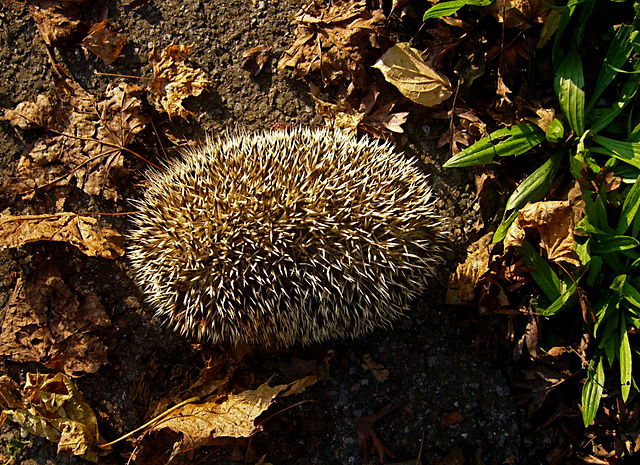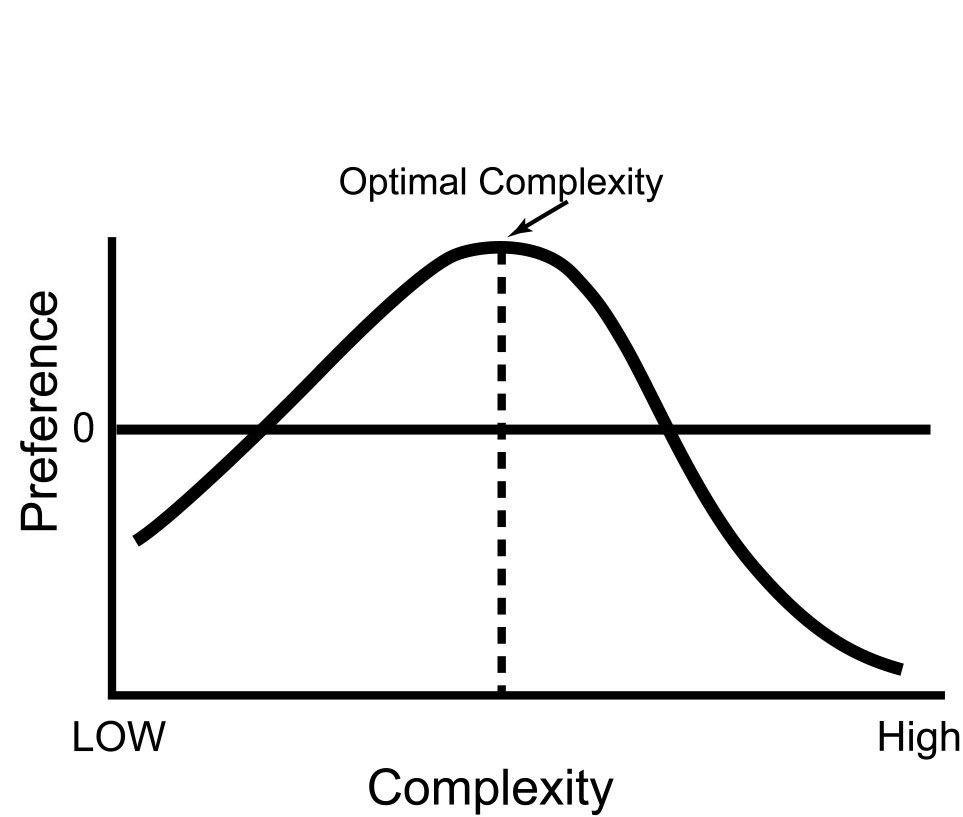Copyright © 2007-2018 Russ Dewey
Competence Motivation
Hull's motivational theory dominated the psychology of motivation during the late 1930s and the 1940s. Hull's last great work was published in 1952, shortly before he died.
Already psychologists were questioning Hull's exclusive emphasis on drive-reduction. Hull portrayed all motivation as a matter of reducing uncomfortable drive or tension states.
It is true that hunger and thirst are uncomfortable, but this conception of motivation leaves out many factors that energize and direct human behavior. As Hull's dominance in the field weakened, psychologists began to explore different types of motives not directly aimed at satisfying biological needs.
What did White propose in his classic Psychological Review article?
In 1959 Robert W. White wrote a classic article for Psychological Review titled, "Motivation Reconsidered: The Concept of Competence." In it, White proposed a new concept: effectance motivation.
Effectance is the basic motivation to be effective and competent. It involves knowing or believing one can have an effect on the environment: the opposite of helplessness.
White's definitions mention the environment (he defined competence as "the ability to interact effectively with the environment") although effectance and its modern descendent, efficacy, also relate to self-change. White suggested the master reinforcer for humans is personal competence.
What are differences between Hullian biological motives and competence motives?
White pointed out several ways competence motives were different from Hullian motives. Unlike biological motives such as hunger and thirst, competence motives are never really satisfied.
They serve to enhance the abilities of the organism, rather than to regulate a biological process. They are not based on a state of biological deprivation. Rather, they help an organism improve itself.
Competence motivation is visible in children. Toddlers try to act powerful and capable, big and grown up, almost as soon as they understand the concepts. Healthy, normal children commonly wish to be regarded as knowledgeable and capable beyond their years.
Children of all ages try to exercise control over some domain of objects (whether it is a doll house, a collection of cars, or something else). In general, people who have a special talent love to exercise it. People like a subject or a game that "plays to their strengths" because it makes them feel competent.
What factors predicted success in business, in one study?
Competency motivation emerges as a critical factor in career success (Bales, 1984). A survey of successful entrepreneurs–people who started their own businesses–showed two factors that were even more important than competitiveness or grades in school.
The important factors were (1) an appetite for hard work, and (2) an enjoyment of mastering skills. They were powerful predictors of success.
Notice the difference between (1) seeking life activities that "play to your strengths," which is certainly natural if people want to feel competent, and (2) the enjoyment of mastering new skills, which Bales described as typical of successful entrepreneurs. These are not the same thing.
If you merely seek situations that make you feel competent, you are likely to exercise old skills, and you are unlikely to advance. The people who succeeded as entrepreneurs were those who sought competency in new skills.
Curiosity
Curiosity can be defined as a motive to explore the environment. In a classic study of curiosity, rhesus monkeys were confined in a small room.
If they pushed a bar, they were allowed to peer out a small rectangular window. The monkeys were willing to press the bar many times for opportunities to look through the window.

Monkeys will work for the privilege of looking out a small window
Daniel Berlyne developed a theory based on motivating effects of curiosity and play. He called it ludic behavior (from the Latin ludere, "to play"). Berlyne said ludic behavior included exploration, investigation, curiosity, art, and intellectual play such as puzzles, science, and humor.
What is evidence that curiosity can motivate animals? What is Berlyne's concept of "ludic behavior"?
In his 1954 article, "A Theory of Human Curiosity," Berlyne defined the motive as "a drive which is aroused by novel stimuli and reduced by continued exposure to these stimuli." Curiosity in Berlyne's conception was the need for information, although Berlyne did not use that term because the era of information technology was just beginning.
Berlyne noted that William James had addressed the concept of curiosity and distinguished between two types: (1) a general, open-ended search (exploration) (2) a focused search based on a specific problem, gap in knowledge, or error of prediction.
Lowenstein (1994) suggested that knowledge gaps are motivating. They certainly are for scientists; that is why Bauer described puzzle solving as a primary motivation for scientists. Curiosity becomes stronger as one feels closer to desired knowledge (i.e. closer to closing the gap).
One fruitful conception of curiosity motivation emphasizes errors of prediction. Prediction errors play an important role in neural networks involved in perception and action, as well as in science where non-trivial prediction is key to testing new theories or models.
We model the world and use this to plan our actions. When something happens that we did not predict, a mismatch with expectations, this calls itself to our attention.
In science, anomalies play this role. Anomalies are unexpected or strange observations. They stimulate great curiosity and new model-building by scientists. Recall that Berlyne included scientific exploration in his concept of ludic behavior.
The effort of scientists to build a coherent model of the universe, without internal consistencies, is much like the effort of the cognitive system to achieve competence and clarity. Therefore it shows similar dynamics. This is another way science mimics the knowledge-gathering operation of the cognitive system.
Curiosity or reaction to novelty is visible in dishabituation or release from habituation, discussed in Chapter 5 (Conditioning). Habituation is a cessation of response when stimuli become thoroughly known and familiar.
What "suggests a deep principle of operation" in neural networks?
When something changes, organisms notice. This is true in animals at all different levels of complexity, from the sea slug Aplysia to newborn babies to adult humans, suggesting a deep principle of operation in neural networks. They habituate to the familiar, but they dishabituate and orient toward novelty.
The Joy of Processing
Humans seem to enjoy combinatorial play. We take patterns we have learned, and we put them together in new and different ways. Here are some varieties of cognitive play.
Visual patterns People enjoy complex visual designs, images, and patterns in a variety of media, such as paintings, sculpture, slides, movies, videos, sculptures, quilts, arabesques, scrimshaw...
How do people "play" with information processing?
Language patterns People enjoy complex language patterns in a variety of media. They enjoy reading books, magazines, newspapers, plays, poems, jokes, oratory, debate, lyrics, chants, prayers, questions, exhortations, stories, novels, reviews, editorials, autobiographies, travelogues, histories...
Motor patterns People enjoy complex motor activity in a variety of settings. They enjoy participating in baseball, basketball, football, tennis, volleyball, skiing, running, jogging, playing Frisbee, dancing, marching, drilling, mime, kluge, lacrosse, cricket, tiddly-winks...
Auditory and musical patterns People enjoy singing, humming, yodeling, playing about 5000 different instruments, listening to radio, records, tapes, and CDs...
Mathematical and numerical patterns People enjoy arithmetic, algebra, trigonometry, geometry, topography, calculus, set theory... The legendary Notre Dame coach Knute Rockne used to work calculus problems on an airplane to pass the time; he claimed it was a fun type of problem solving.
Whatever the form of information processing, somebody enjoys making designs with it, trying experiments with it, or just playing with it. This is compatible with Berlyne's concept of curiosity aimed at experiencing novelty and more expansive than Lowenstein's idea about a motivation to close gaps of information.
Humans may have a general motivation to exercise our creative cognitive abilities. We have seen some hints that neurons have a built-in need to be active, for example, in musical hallucinations in deafness and similar phenomena of disuse supersensitivity.
This need to be active in neurons creates a beneficial sort of competition to be included in cognitive states. That aids bottom-up processing in the cognitive system. (Recall, from the chapter on Cognition, that a combination of top-down and bottom-up processing pervades cognition.)
Bottom-up activity is not directed from above; it rises up from widespread, diffuse areas of the cognitive system. This implies a competition for inclusion in ongoing activity.
In discussing automaticity, we noted how a certain amount of autonomous (automatic) cognitive activity is necessary to explain creativity. On that page we quoted William James from a discussion of willpower in his Briefer Course, pointing out that nothing truly new can be imagined ahead of time.
In other words, new and creative things cannot be pre-specified. They cannot be dictated as top-down activity; they must rise up from below.
What sort of competition within the cognitive system underlies creative activity?
We see creative combinatorial activity in dreaming, when the cognitive system is free from some of the constraints of realistic perception. The brain might be conceived as an impulse engine, with selection (at many levels) determining which impulses are allowed to propagate, combine, and form into higher level cognitive products.
Complexity and Preference: A Hedgehog Theory
In mental activity of any sort, a moderate level of novelty and challenge is pleasurable. Too much change too fast is overwhelming and unpleasant.
We seek to experience events which lie somewhere between chaos (on the one hand) and boredom (on the other). Dember and Earl proposed this idea in 1957, but Edward L. Walker developed it as a wide-ranging principle of motivation in his hedgehog theory of behavior (Walker, 1980).
The name "hedgehog theory" is a reference to a saying by the ancient Greek poet Archilochus, who said, "The fox knows many things, but the hedgehog knows one big thing." Foxes have a different trick for every situation. They are versatile and clever.
Hedgehogs have only one trick (curling up into a spiny ball). They use it in all situations when they are vulnerable. It is a very effective trick.

Hedgehog relaxed, from Kirill Makukhin

Hedgehog curled, from Abderitestatos - Wikimedia commons
Walker called his theory a hedgehog theory because, like the hedgehog, it has one trick. It explains all behavior using just one principle: the idea that subjective complexity determines preference.
What is the "one trick" in Walker's hedgehog theory?
Preference is measured by giving an organism free choice of alternatives to determine what it likes to do. Walker's theory holds that organisms prefer to do things that are neither too simple nor too complex. They seek activities that are at an optimum level of complexity.
The relationship between preference and complexity can be shown on an inverted-U shaped curve. The zero point represents a neutral hedonic reaction, neither pleasure nor pain.

The inverted-U function in Walker's Hedgehog theory
When complexity is too low, the line drops below zero. This means events are too simple, which makes them boring and unpleasant. When the complexity is moderate, enjoyment is greatest. When complexity is too great, events become unpleasant: chaotic and overwhelming.
What "critical ingredient" did Walker add to his theory?
Walker's hedgehog theory adds a critical ingredient. As a person has repeated encounters with a complex stimulus, the brain's response becomes simpler with each encounter.
That means a complex stimulus gets more enjoyable with repeated experience. It moves toward optimal complexity. But it also means that an optimal stimulus becomes simpler with repeated experience, eventually becoming boring.
In this way, the hedgehog theory explains why people move through a series of challenges in life. Each challenge starts by being too difficult, too complex.
Then it becomes gradually more manageable and more exciting and enjoyable. Eventually it becomes boring, and the person moves on to new challenges.
The hedgehog theory explains a common phenomenon you may have noticed when encountering new forms of art. When you encounter a piece of music that is chaotic or difficult to interpret, you may be repulsed.
With repeated experience, you may see a pattern in it. Eventually, you may learn to love it. It "grows on you."
Eventually even favorite music becomes overly familiar. At this point one may appreciate a change just for the sake of change.

The hedgehog theory in action
The hedgehog theory can be related to research on taste preferences. Youngsters who tried plain yogurt for the first time usually reported that it tasted worse than they expected. They did not like it.
When sampling it repeatedly, however, 92 out of 151 subjects grew to like it more and more (Moses-Zirkes, 1993). Presumably the taste of plain yogurt was a bit of a shock at first, probably because it is more sour than the sweet yogurts most children have encountered.
But plain yogurt is not bad, just different. Often, after a few encounters with it, the taste become more appealing. This is what the phrase adult taste refers to: a taste that grows on you with experience.
What pattern generally occurs as you master a demanding task?
This can happen with all manner of stimuli, even academic subjects. A topic may seem confusing at first, painfully difficult to grasp.
Gradually things fall into place. The subject becomes simpler as you encounter it repeatedly. Eventually you may find yourself enjoying it. Later, after you master it, you might enjoy moving on to more difficult things.
Walker's theory is rather obscure, and his book can be hard to find. However, Walker may have hit on a basic principle of operation in the cognitive system.
Walker formulated the hedgehog theory in the era before brain scans. The first part of his theory (psychological simplification with repeated experience) receives striking support from brain scanning evidence.
As described in Chapter 3, people who are trying to master a new task show widespread activation in the brain. As they master a task, the area of activity shrinks.
Eventually, when a task becomes automatic, the area activated in the brain is very small. The task is now easy, almost second nature. At that point, a person has the resources available (and the motivation, Walker would say) to master a new task.
The hedgehog theory also predicts that, with enough repetitive experience, an activity once challenging becomes too familiar. A person becomes tired of having the same stimulation all the time. According to hedgehog theory, we are automatically motivated to move on to new challenges.
---------------------
References:
Bales, J (1984, July). Mastery, hard work top competitiveness in predict. APA Monitor, p.12.
Berlyne, D. E. (1954) A theory of human curiosity. British Journal of Psychology, 45, 180-191.
Day, H. (1965) "Attention, Curiosity, and Exploration," in M. Krampen (Ed.) Design and Planning. New York: Hasting House.
Lowenstein, G. (1994) The psychology of curiosity: A review and reinterpretation. Psychological Bulletin, 116, 75-98.
Moses-Zirkes, S. (1993, August). Pleasure, pain evaluation not always rooted in logic. APA Monitor. pp.30-31.
Walker, E. L. (1980). Psychological complexity and preference: A hedgehog theory of behavior. Monterey, CA: Brooks/Cole.
White, R. (1959). Motivational reconsidered: The concept of competence. Psychological Review, 66, 297-333. doi:10.1037/h0040934.
Write to Dr. Dewey at psywww@gmail.com.
Don't see what you need? Psych Web has over 1,000 pages, so it may be elsewhere on the site. Do a site-specific Google search using the box below.
